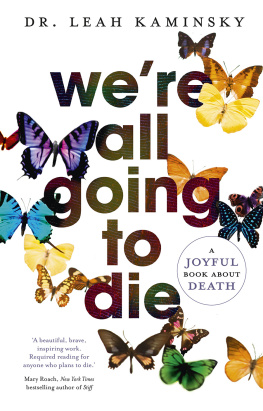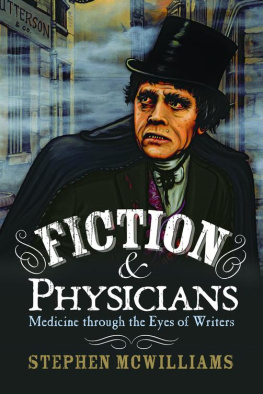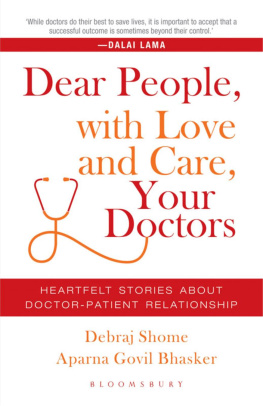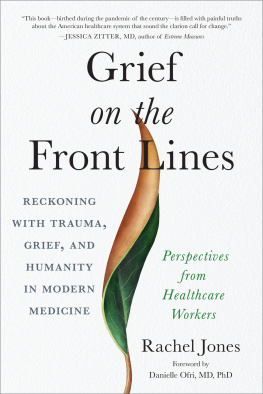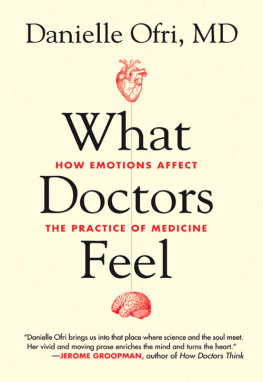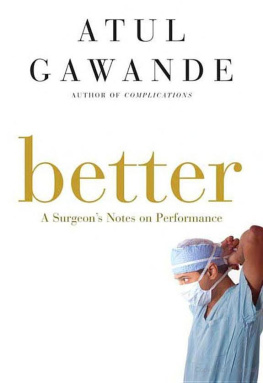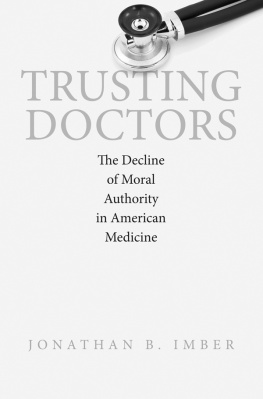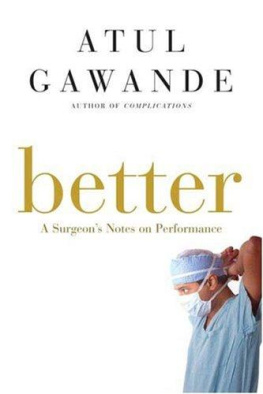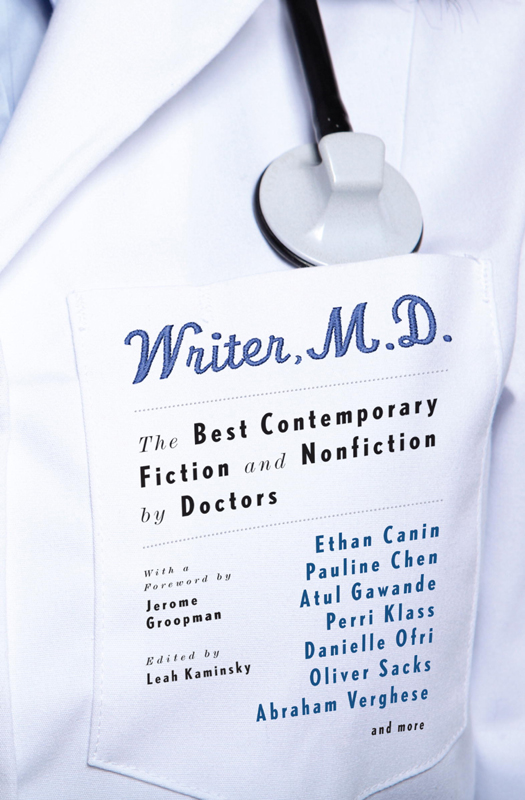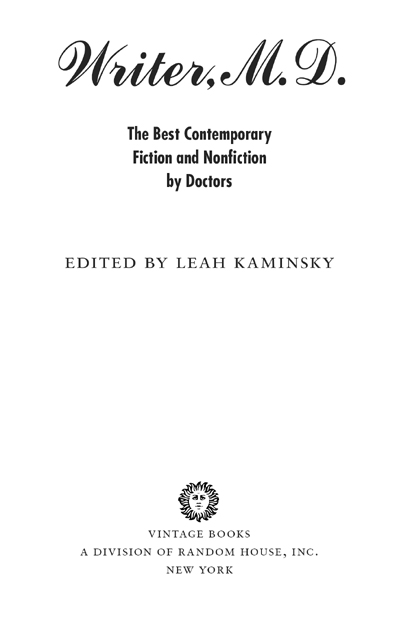LEAH KAMINSKY
Writer, M.D.
Leah Kaminsky is an award-winning writer and a practicing family physician. She is the author of four books, including Stitching Things Together, a collection of poetry. She has studied writing at the Iowa Writers Workshop, New York University, and Vermont College of Fine Arts, and is currently at work on her first novel. She lives in Melbourne, Australia.
A VINTAGE BOOKS ORIGINAL, JANUARY 2012
Copyright 2012 by Leah Kaminsky
All rights reserved. Published in the United States by Vintage Books, a division of Random House, Inc., New York, and in Canada by Random House of Canada Limited, Toronto.
Originally published, in different form, in Australia as The Pen and the Stethoscope by Scribe Publications Pty Ltd., Melbourne.
Vintage and colophon are registered trademarks of Random House, Inc.
Owing to limitations of space, permission to reprint previously published material may be found on .
The Cataloging-in-Publication Data for Writer, M.D. is available at the Library of Congress.
eISBN: 978-0-307-94687-4
www.vintagebooks.com
Cover design by Mark Abrams
v3.1
For Yohanan, Alon, Ella, and Maia Loeffler
Contents
Medicine is my lawful wife and literature my mistress; when I get tired of one, I spend the night with the other.
Anton Chekhov
Foreword
A physician works at the border between science and the soul. Schooled in physiology and pharmacology, the molecular workings of genes and proteins, the biochemistry of health and disease, a doctor brings to care a diverse body of expert knowledge. That knowledge is rapidly expanding with the use of sophisticated technologies such as genomics that map mutations in our DNA, and MRI scans that reveal millimeter abnormalities in our inner organs. This wealth of information has changed the nature of diagnosis and treatment, bringing many maladies under the bright light of science, illuminating their genesis, and providing a rational basis for their remedy.
But what has not changed over the millennia is the human soul. The role of the physician as healer has not been fundamentally altered by his burgeoning knowledge. Greater knowledge does not necessarily translate into greater wisdom. Wisdom requires melding information with judgment and values. The wise doctor probes not only the organs of his patient but also his feelings and emotions, his fears and his hopes, his regrets and his goals. And to accomplish that most important task of applying wisdom, the physician also needs to take his own emotional temperature, to realize how his own beliefs and biases may be brought to bear in his efforts to secure a better future for his patient.
This remarkable collection melds science and the soul, logic with feeling, knowledge with wisdom. The voices that the reader hears are among the most prominent in the constellation of physician-writers. What makes these writers so compelling is not only the fluidity of their prose and the intensity of their focus, not only their literary and narrative skills, but also their remarkable degree of self-awareness. A physician is trained in medical school and residency to hide his feelings and filter his thoughts. This training is required in order to effectively deliver care in an environment that is often chaotic and unnerving. The doctor needs to present himself to the patient as a safe harbor of stability in the midst of the tempest of illness. But when that doctor has moved from the clinic to the page, the mask drops, and we see the turmoil and tribulations in his heart and mind. The humanity of both patient and physician is what makes the stories that follow so rich and so fulfilling.
Jerome Groopman
Introduction
When I first became a medical student, many years ago, I developed a condition I call Tunnel Vision of the Soul. It is a crippling ailment in which you see only things that are straight in front of you. You focus on the sickness and dont see the sick person. Your peripheral vision is blurred, so that you dont notice your surroundings, with all their inherent colors, nuances, and possibilities, unless you deliberately turn your head to look. The onset can be insidious, the symptoms barely perceptible at first.
As I was spending lunchtimes in the anatomy museum, surrounded by dissections under glass, it never occurred to me that what lay exposed was the pelvis of someones mother, or the foot of somebodys brother. I munched on chicken sandwiches, busily memorizing mnemonics: Swiftly Lower Tilleys Pants To Try Coitus There, for the bones of the wrist; Grandpa Shagging Grandmas Love Child, for the top layers of the skin.
After six years as a medical student, practicing rectal examinations on old men who had become paralyzed following a stroke, performing bone marrow biopsies on dying little old ladies, and shoving needles into the spines of crying babies, I emerged almost totally desensitized to human pain and suffering. My fortnightly salary checks were based on the fact that other people fell ill, or died. And as a cocky young intern, proudly wearing my long white coat while strolling through the wards of a large teaching hospital, I felt impermeable.
The cure for my tunnel vision came gradually. I started reading literature, which coaxed me to return to writingsomething I hadnt done since high school. With my trembling pen, I began to heal my own wounds and try to make some sort of sense of what I had experienced as a young doctor and as a human being.
Since that time, my medicine has always fed and informed my writing. More important, my writing has hopefully made me a better doctor. Becoming a writer has opened my eyes, so that I am able to see my patients as human beings, each one with his or her very own story to tell. And nowadays, I hope that I am able to listen to their heartswith both my stethoscope and my pen poised.
Writer, M.D. is a collection of storiesfiction and nonfictionthat aims to look behind the doctors mask. What goes on inside the mind of the human being who deals with enormous existential issues and traumatic situations on a daily basis? It is through writing that many doctors have plumbed the depths and richness of their experience and, in turn, used this to explore their patients inner lives.
These stories canvass emotional experiences acutely felt by doctorsan awareness of our mortality, of how humanity interplays with medicine, of the weight of responsibility carried by the profession. The fiction pieces, in particular, often use the point of view of the patient to examine a range of issues, including grief, trauma, illness, and aging.
The public is hungry to see behind the veneer of the medical professional, as evidenced by the burgeoning number of TV shows such as ER and Greys Anatomy. This book delves beyond sensationalism, taking a critical look at doctors close observations of, and reflections upon, their working lives.
Physician-writers have a long tradition. Apollo managed to have a dual career as the Greek god of both poetry and medicine. Copernicus, Maimonides, Bulgakov, and Chekhov were all physicians who purloined their patients narratives. In this anthology, I hope the reader will be afforded a glimpse of the world through the eyes of some of our best contemporary doctor-writers. Every patient has a story to tell, if only you take the time to listen.





